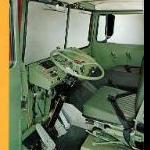-
Posts
4,975 -
Joined
-
Last visited
-
Days Won
469

70mackMB replied to BKrois's topic in Antique and Classic Mack Trucks General Discussion

70mackMB replied to 70mackMB's topic in Odds and Ends
BigMackTrucks.com is a support forum for antique, classic and modern Mack Trucks! The forum is owned and maintained by Watt's Truck Center, Inc. an independent, full service Mack dealer. The forums are not affiliated with Mack Trucks, Inc.
Thank you for your support!